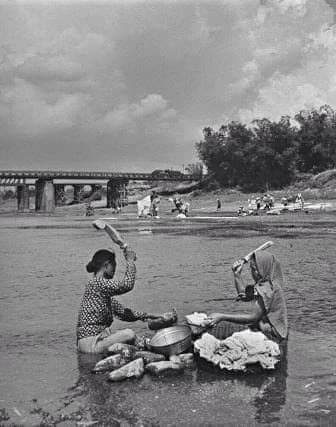MARIKINA RIVER

MARIKINA RIVER (1934)
History
The first settlers were descendants of Lakan Dula in the 1560s and the area is part of Kingdom of Tondo, followed by Augustinians were the first to arrive at the valley in the 1570s, at the spot known as Chorillo in Barangka. In 1572, Our Lady of the Abandoned Parish was established. Next came the Jesuits in 1630, in a place now called Jesus dela Peña (Jesus of the Rocks). Here, the Jesuits established a mission and built a chapel still known today as Jesus dela Pena Chapel. Fray Pedro de Arce, apostolic ruler of the Archbishop of Manila at that time, approved transfer of ecclesiastical control and supervision to the Jesuits, and settled the place as a town.
In 1665, an intensity 8 earthquake struck the valley and nearby Manila, and it is related to the activity now known as Marikina Valley Fault System. Only a Jesuit church experienced great damage and resulting 19 dead on the said earthquake.
Felix Berenguer de Marquina
In 1787, the town was called "Mariquina" after Felix Berenguer de Marquina, who was the governor-general at that time, and the town was declared a pueblo under the Spanish colonial government.
By the 19th century, Hacienda Mariquina was owned and administered by the Tuazon family and had become the largest in the Philippines. The hacienda was declared a mayorazgo by the Spanish colonial government. Don Juan Gregorio became the first Alcalde Capitan of Mariquina in 1822.
During the Philippine Revolution in 1896, Andrés Bonifacio arrived in Mariquina before he and his Katipuneros proceeded to the caves of Montalban. Mariquina became the capital of the Province of Manila in 1898, when the Philippine Revolution broke out, a period when Philippine Independence was declared by Emilio Aguinaldo, the first Philippine president. Don Vicente Gomez became the first Alcalde Presidente of Mariquina in 1900.
20th century
On June 11, 1901, shortly after the United States took possession of the Philippines, its name officially became "Marikina". The province of Rizal was created by virtue of Act No. 137 by the First Philippine Commission which was acting as the unicameral legislative body in the island of Luzon. Marikina, along with many other towns around Manila, was incorporated into the new province.
In 1906, the Manila Railroad Company completed a 31-kilometer steam train line called "Marikina Line", also known as Rosario-Montalban branch, a branch of Philippine National Railway which is currently existing (converted into the road which is known today as Daang Bakal, including Shoe Avenue), Marikina Railway Depot (Marikina Elementary School in the present-day) and Marikina Railway Station, connecting Montalban and Rosario (known today as Tramo, in Pasig). Marikina Bridge, a vital economic link to Manila, was formally opened in 1934. During the construction of the train line, not far from Marikina Railway Depot, Marikina Airfield was completed and used for civilian airfield. The runways were subsequently converted into the road known today as E. Rodriguez Avenue and E. Santos Streets, and the airfield stands today as Paliparan Subdivision. In 1936, the train line was completely abandoned, while the airfield became primarily used by the Japanese during World War II. After the war, neither was rebuilt.
In 1942, Japanese Imperial forces occupied Marikina. The town was liberated in 1945 by combined U.S. and Philippine Commonwealth ground troops, who attacked the Japanese Imperial Army by artillery from Quezon City. Almost all of the large buildings, including the church bell tower, were destroyed. In reality, the Japanese had already left the town and retreated to the north. The town saw over 400 civilians casualties by the end of World War II. Local Filipino troops under the pre-war 4th and 42nd Infantry Division of the Philippine Commonwealth Army entered Marikina and assisted U.S. forces in attacking Japanese troops during the liberation.[citation needed] The general headquarters of the Philippine Commonwealth Army was rebuilt and stationed in Marikina after the war.
In 1956, Marikina had re-emerged as a town of shoemakers after World War II. Honed by years of shoe manufacturing experience, the natives had developed a work ethic that prepared them for the arrival of heavy industries, and the town was finally named as the "Shoe Capital of the Philippines". With the industrial plants came waves of workers who chose to stay, rapidly increasing the population. In 1968, Kapitan Moy's house (now known as Sentrong Pangkultura ng Marikina) was declared a national shrine by the town council and the National Historical Commission. In 1969, Rodriguez Sports Complex, known today as Marikina Sports Center was completed.
On November 7, 1975, by virtue of Presidential Decree No. 824, four cities and thirteen towns of Rizal, including Marikina, were made part of Metropolitan Manila Area
Congratulations @aemie! You received a personal award!
Happy Birthday! - You are on the Steem blockchain for 1 year!
Click here to view your Board
Congratulations @aemie! You received a personal award!
You can view your badges on your Steem Board and compare to others on the Steem Ranking
Vote for @Steemitboard as a witness to get one more award and increased upvotes!